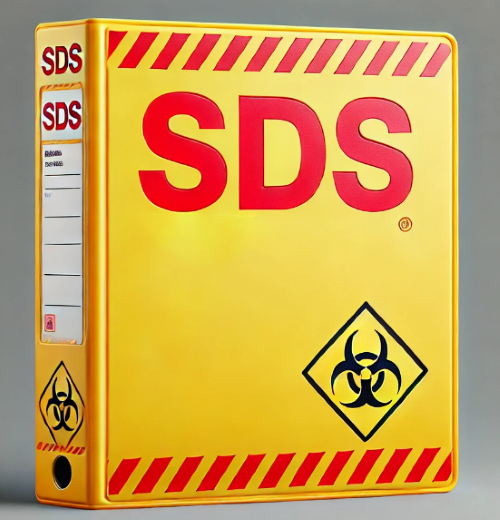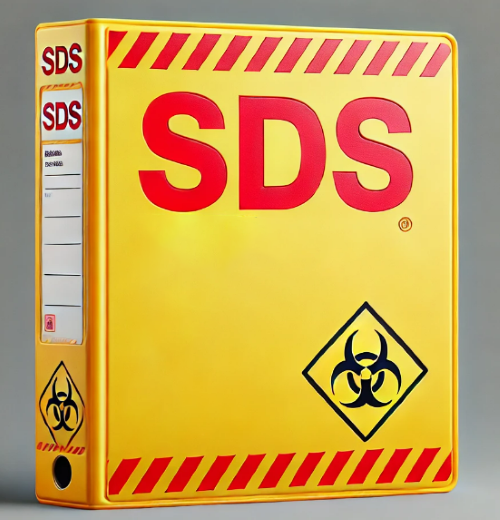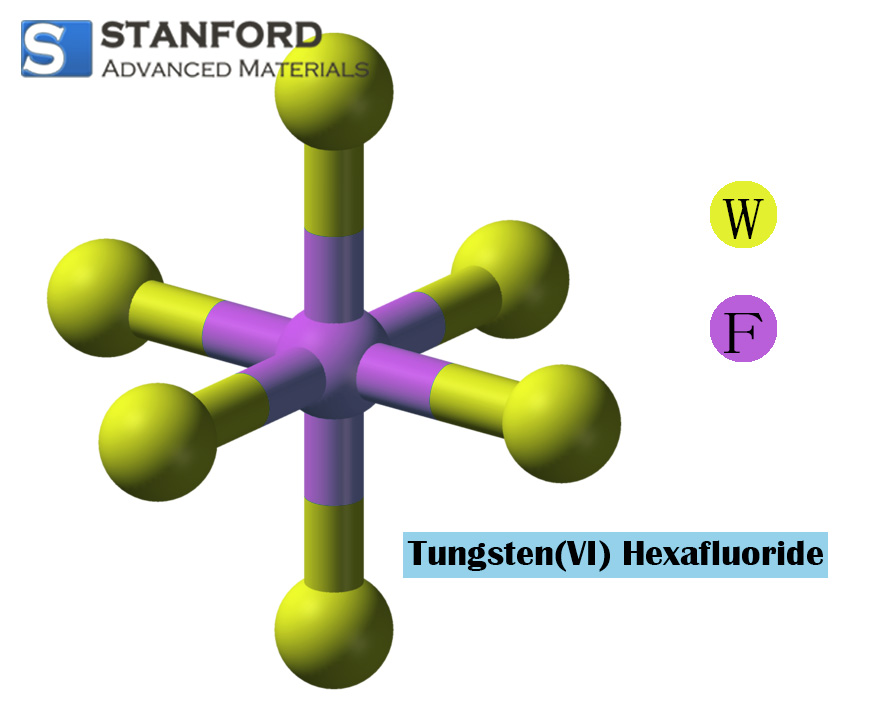SDS Of Cobalt Oxide
1. PRODUCT AND COMPANY IDENTIFICATION
1.1 Product designations
Product name: Cobalt Oxide
CAS No.: 1308-06-1
1.2 Identified uses and uses to be avoided
Identified uses: Laboratory chemicals, Synthesis of substances
1.3 Details of the supplier of this Safety Data Sheet
Manufacturer/Supplier:
Stanford Advanced Materials
23661 Birtcher Dr.
Lake Forest, CA 92630
Telephone: (949) 407-8904
Fax: (949) 812-6690
E-mail: sales@SAMaterials.com
2. IDENTIFICATION OF HAZARDS
2.1 Classification of the substance or mixture
GHS classification in accordance with 29 CFR 1910 (OSHA HCS)
Respiratory sensitisation (Category 1), H334
Skin sensitisation (Category 1), H317
Carcinogenicity (Category 1A), H350
Acute aquatic toxicity (Category 3), H402
Chronic aquatic toxicity (Category 3), H412
The complete text of the H‑statements mentioned in this section is provided in section 16.
2.2 GHS label elements, including safety advice
Pictogram
Signal word: Danger
Hazard statement(s)
H317 may cause an allergic skin reaction.
H334 may cause allergy or asthma symptoms or breathing difficulties if inhaled.
H350 may cause cancer.
H412 harmful to aquatic organisms with long‑term effects.
Precautionary statement(s)
P201 obtain special instructions before use.
P202 do not use until all precautionary statements are read and understood.
P261 avoid breathing dust/fume/gas/mist/vapour/spray.
P272 contaminated work clothing should not be stored in areas where they may be exposed to other persons.
P273 avoid release to the environment.
P280 wear protective gloves/protective clothing/eye protection/face protection.
P285 wear respiratory protection if ventilation is not adequate.
P302 + P352 IF IN SKIN CONTACT: wash with plenty of water and soap.
P304 + P341 IF INHALED: remove person to fresh air and keep comfortable for breathing.
P308 + P313 IF exposed or if symptoms occur: seek medical advice/attention.
P333 + P313 if skin irritation or rash occurs: seek medical advice/attention.
P363 remove contaminated clothing before reuse and wash it.
P405 store under lock and key.
P501 dispose of content/container in accordance with local requirements for a recognised waste disposal facility.
2.3 Hazards not otherwise classified (HNOC) or not covered by the GHS – none
3. COMPOSITION/INGREDIENT INFORMATION
3.1 Ingredients
Formula: Co3O4
Molecular weight: 240.80 g/mol
CAS No.: 1308-06-1
4. FIRST AID MEASURES
4.1 Description of first aid measures
General advice
Obtain medical advice immediately. Show this Safety Data Sheet to the attending doctor and remove the person from the hazard area.
If inhaled
If inhaled, remove the person to fresh air. If breathing stops, perform artificial respiration and seek medical attention.
If on skin
Wash the affected area with plenty of water and soap and seek medical attention.
If in eyes
Rinse cautiously with water.
If swallowed
Do not give anything by mouth to an unconscious person. Rinse mouth with water and seek medical assistance.
4.2 Most important acute and delayed symptoms and effects
The most significant known symptoms and effects are described in the hazard identification.
4.3 Indications for immediate medical attention or special treatment
No data are available.
5. FIRE‑FIGHTING MEASURES
5.1 Suitable extinguishing media
Use water spray, alcohol‑resistant foam, dry chemical or carbon dioxide.
5.2 Specific hazards arising from the substance or mixture
No data are available.
5.3 Special instructions for fire‑fighting
Use self‑contained breathing apparatus for fire‑fighting if required.
5.4 Other information
No data are available.
6. ACCIDENTAL RELEASE MEASURES
6.1 Personal precautions, protective equipment and emergency procedures
Wear personal protective equipment. Avoid formation of dust. Prevent inhalation of vapour, mist or gas. Ensure adequate ventilation. Evacuate personnel to a safe area. Avoid breathing dust.
For personal protection see section 8.
6.2 Environmental precautions
Prevent further leakage or spillage if it can be done without risk. Ensure that the product does not enter the sewage system. Prevent discharge to the environment.
6.3 Methods and materials for containment and cleanup
Collect and dispose of dust in a manner that minimises its airborne re‑dispersion. Sweep up and shovel into a suitable, closed container for disposal.
7. HANDLING AND STORAGE
7.1 Precautions for safe handling
Avoid contact with skin and eyes. Prevent dust and aerosol formation. When processing solids, be aware that combustible dust may form, thereby creating a dust explosion hazard. Ensure that adequate extraction is provided in areas where dust is generated. Refer to section 2.2 for further precautions.
7.2 Conditions for safe storage, including any incompatibilities
Store in a tightly closed container in a dry and well‑ventilated area. Store in a dry place as the product is hygroscopic. Storage group (TRGS 510): Non‑combustible, acutely toxic Category 3 / toxic substances or substances with chronic effects.
8. EXPOSURE CONTROLS / PERSONAL PROTECTIVE EQUIPMENT
8.1 Exposure limit values
Components with workplace control parameters are present.
8.2 Exposure controls
Implement appropriate technical controls. Follow good occupational hygiene and safety practices. Wash hands before breaks and at the end of the working day.
Personal protective equipment
Eye/face protection
Wear eye protection and a face shield that comply with the standards of the relevant authorities such as NIOSH (USA) or EN 166 (EU).
Skin protection
Wear gloves. Test gloves before use. Use correct technique when removing gloves (avoid contact with the outer surface) to prevent skin contact with this product. Dispose of contaminated gloves in accordance with local regulations and good laboratory practise. Wash hands and dry thoroughly.
Body protection
Wear a full chemical protection suit. Select the type of protective clothing according to the concentration and quantity of the hazardous substance at the workplace.
Respiratory protection
Where risk assessment indicates that an air‑purifying respirator is appropriate, use a full‑face particulate respirator of type N100 (US) or P3 (EN 143) with appropriate filters in addition to technical controls. If the respirator is the sole protective measure, use a full‑face supplied-air respirator. Ensure respirators and components comply with the standards of relevant authorities, such as NIOSH (USA) or CEN (EU).
Environmental exposure control
Prevent further leakage or spillage if it can be done without risk. Do not allow the product to enter the sewage system. Discharge to the environment must be prevented.
9. PHYSICAL AND CHEMICAL PROPERTIES
9.1 Information on basic physical and chemical properties
a) Appearance
Form: Powder
Colour: black
b) Melting/Freezing point
Melting point/range: 895 °C (1 643 °F) – lit.
c) Relative density: 6.11 g/ml at 25 °C (77 °F)
d) Water solubility: 0.00156 g/l at 20 °C (68 °F) – OECD Test Guideline 105 – very poorly soluble
e) Decomposition temperature: > 900 °C (> 1 652 °F)
9.2 Other safety-related information
Bulk density: 0.78 g/l
10. STABILITY AND REACTIVITY
10.1 Reactivity
No data are available.
10.2 Chemical stability
The product is stable under the recommended storage conditions.
10.3 Possibility of hazardous reactions
No data are available.
10.4 Conditions to avoid
Avoid moisture.
10.5 Incompatible materials
Reducing agents.
10.6 Hazardous decomposition products
Hazardous decomposition products may be formed during a fire – cobalt/cobalt oxides.
Other decomposition products: No data are available.
11. TOXICOLOGICAL INFORMATION
11.1 Information on toxicological effects
Acute toxicity
LD50 Oral – Rat – male and female – > 5 000 mg/kg
(OECD Test Guideline 401)
LC50 Inhalation – Rat – 4 h – > 5.06 mg/l
(OECD Test Guideline 436)
LD50 Dermal – Rat – male and female – > 2 000 mg/kg
(OECD Test Guideline 402)
No further data are available.
Dermal corrosion/irritation
Skin – Rat
Result: No skin irritation observed.
Serious eye damage/irritation
Eyes – Rabbit
Result: No eye irritation observed
(OECD Test Guideline 405)
Respiratory or skin sensitisation
In‑vivo test – Mouse
Result: Does not cause skin sensitisation
(OECD Test Guideline 429)
Gene mutation (mutagenicity)
No data are available.
In‑vitro test
Mouse lymphoma cells
Result: Negative
OECD Test Guideline 475
Rat – male and female
Result: Negative
Carcinogenicity
IARC: Group 1 – Carcinogenic to humans (Nickel monoxide)
IARC: Group 1 – Carcinogenic to humans (Nickel monoxide)
NTP: Known to be carcinogenic to humans (Nickel monoxide)
NTP: Known to be carcinogenic to humans (Nickel monoxide)
OSHA: No component in this product present at or above 0.1% is identified as a carcinogen or potential carcinogen by OSHA.
No component in this product present at or above 0.1% is identified as a carcinogen or potential carcinogen by OSHA.
Reproductive toxicity
No data are available.
No further data are available.
Specific target organ toxicity – single exposure
No data are available.
Specific target organ toxicity – repeated exposure
No data are available.
Aspiration hazard
No data are available.
Additional information
RTECS: Not available
Ingestion effects may include: burning pain in the mouth, throat and stomach. Prolonged or repeated exposure may result in fatigue, cardiac arrhythmias, cramps and vomiting. Gastrointestinal irregularities have been observed based on human evidence (Nickel monoxide).
12. ECOLOGICAL INFORMATION
12.1 Toxicity
Toxicity for Daphnia and other invertebrate aquatic organisms
EC50 – Daphnia magna (water flea) – > 136 mg/l – 48 h
Toxicity for algae
EC50 – Pseudokirchneriella subcapitata (green algae) – 88 mg/l – 72 h
12.2 Persistence and degradability
No data are available.
12.3 Bioaccumulation potential
No data are available.
12.4 Mobility in soil
No data are available.
12.5 Results of the PBT/vPvB assessment
PBT/vPvB assessment is not available as a chemical safety assessment was not required/conducted.
12.6 Other adverse effects
An environmental hazard cannot be excluded if the product is handled or disposed of improperly. The substance is harmful to aquatic organisms with long‑term effects.
13. DISPOSAL CONSIDERATIONS
13.1 Waste treatment methods
Product
Dispose of surplus and non‑recyclable solutions via a licensed disposal contractor. Contact an approved professional waste disposal service for the removal of this material. Dissolve or mix the material with a combustible solvent and incinerate it in a chemical incinerator equipped with a afterburner and a scrubber.
Contaminated packaging
Dispose of in the same manner as unused product.
14. TRANSPORT INFORMATION
DOT (US)
Not regulated as hazardous material
IMDG
Not regulated as hazardous material
IATA
Not regulated as hazardous material
15. REGULATORY INFORMATION
SARA 302 Components
None of the chemicals present in this material are subject to the reporting requirements under SARA Title III, Section 302.
SARA 313 Components
The following components are subject to the reporting requirements under SARA Title III, Section 313:
Nickel monoxide
CAS No.: 1313-99-1
Revision date: 24/04/1993
Tricobalt tetraoxide 1308-06-1 01/07/2007
SARA 311/312 Hazards
Acute health hazard, Chronic health hazard
Massachusetts Right To Know Components
Nickel monoxide
CAS No.: 1313-99-1
Revision date: 24/04/1993
Pennsylvania Right To Know Components
Tricobalt tetraoxide
CAS No.: 1308-06-1
Revision date: 01/07/2007
Nickel monoxide 1313-99-1 24/04/1993
New Jersey Right To Know Components
Tricobalt tetraoxide
CAS No.: 1308-06-1
Revision date: 01/07/2007
Nickel monoxide 1313-99-1 24/04/1993
California Prop. 65 Components
WARNING! This product contains a chemical known to the State of California to cause cancer.
Nickel monoxide
CAS No.: 1313-99-1
Revision date: 28/09/2007
WARNING! This product contains a chemical known to the State of California to cause cancer.
Nickel monoxide
CAS No.: 1313-99-1
Revision date: 28/09/2007
16. OTHER INFORMATION
The full text of the H‑statements mentioned in sections 2 and 3.
Aquatic acute toxicity
Aquatic chronic toxicity
Carcinogenicity
H317 may cause an allergic skin reaction.
H334 may cause allergy or asthma symptoms or breathing difficulties if inhaled.
H350 may cause cancer.
H372 damages organs upon prolonged or repeated inhalation exposure.
H402 harmful to aquatic organisms.
H412 harmful to aquatic organisms with long‑term effects.
H413 may have long‑term harmful effects on aquatic organisms.
Respiratory sensitisation
Skin sensitisation
STOT RE repeated exposure specific target organ toxicity
HMIS classification
Health hazard: 2
Chronic health hazard: *
Flammability: 0
Physical hazard: 0
NFPA classification
Health hazard: 2
Fire hazard: 0
Reactivity hazard: 0
Further information
This Safety Data Sheet is provided solely for your information, consideration and investigation. Stanford Advanced Materials does not give any express or implied guarantees and assumes no responsibility for the accuracy or completeness of the data herein.

 Bars
Bars
 Beads & Spheres
Beads & Spheres
 Bolts & Nuts
Bolts & Nuts
 Crucibles
Crucibles
 Discs
Discs
 Fibers & Fabrics
Fibers & Fabrics
 Films
Films
 Flake
Flake
 Foams
Foams
 Foil
Foil
 Granules
Granules
 Honeycombs
Honeycombs
 Ink
Ink
 Laminate
Laminate
 Lumps
Lumps
 Meshes
Meshes
 Metallised Film
Metallised Film
 Plate
Plate
 Powders
Powders
 Rod
Rod
 Sheets
Sheets
 Single Crystals
Single Crystals
 Sputtering Target
Sputtering Target
 Tubes
Tubes
 Washer
Washer
 Wires
Wires
 Converters & Calculators
Converters & Calculators
 Write for Us
Write for Us
 Chin Trento
Chin Trento



